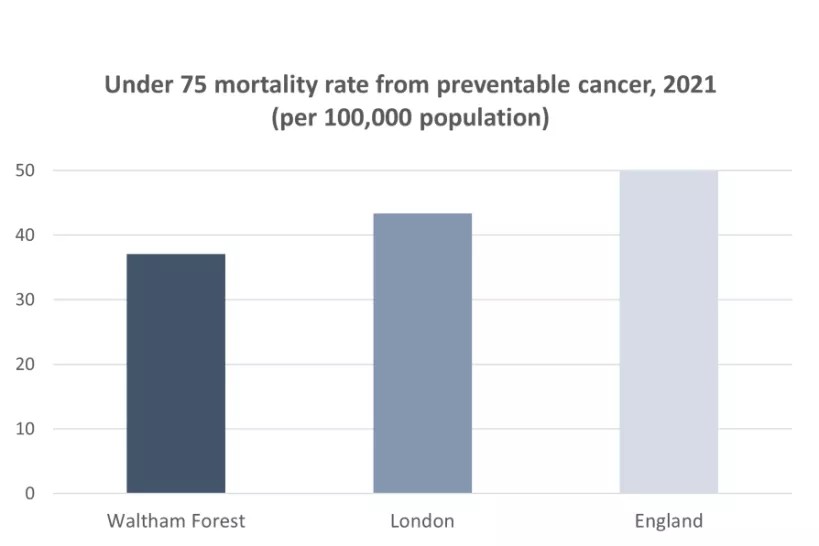Last updated: 3 June 2024
Next review: 3 December 2024
This content is part of the Waltham Forest JSNA. To see other JSNA content, visit the JSNA landing page
Premature mortality includes deaths occurring under the age of 75. Preventable mortality is defined as deaths where all or most deaths could potentially be avoided through effective public health interventions in the broadest sense.
Cancer is the largest cause of premature death in England, making it one of the key areas to address to ensure a continued reduction in the rate of preventable mortality.
In Waltham Forest, 65 people aged under 75 died of preventable cancer in 2021, which equates to a rate of 37.1 per 100,000 population; this was significantly lower than the national average of 50.1 deaths per 100,000, and similar to the London average of 43.3 per 100,000.
Since 2002, the rate of preventable premature cancer mortality in Waltham Forest has been broadly similar to the London and England averages, following a general downward trend.
As with other preventable mortality, there is a strong correlation between deprivation and preventable cancer mortality rate, with the most deprived areas having a rate of 68.5 deaths per 100,000 and the least deprived a rate of 38.8 per 100,000, with the increase being linear as the deprivation level increases.
There are also large gender inequalities, with males having significantly higher rates of preventable premature cancer mortality compared to females (63.0 compared to 38.1), likely due to lifestyle differences (higher rates of smoking, alcohol consumption and occupational exposures).

Source: OHID Public Health Outcomes Framework. Data based on Office for National Statistics source data. Date accessed: 07 July 2023.